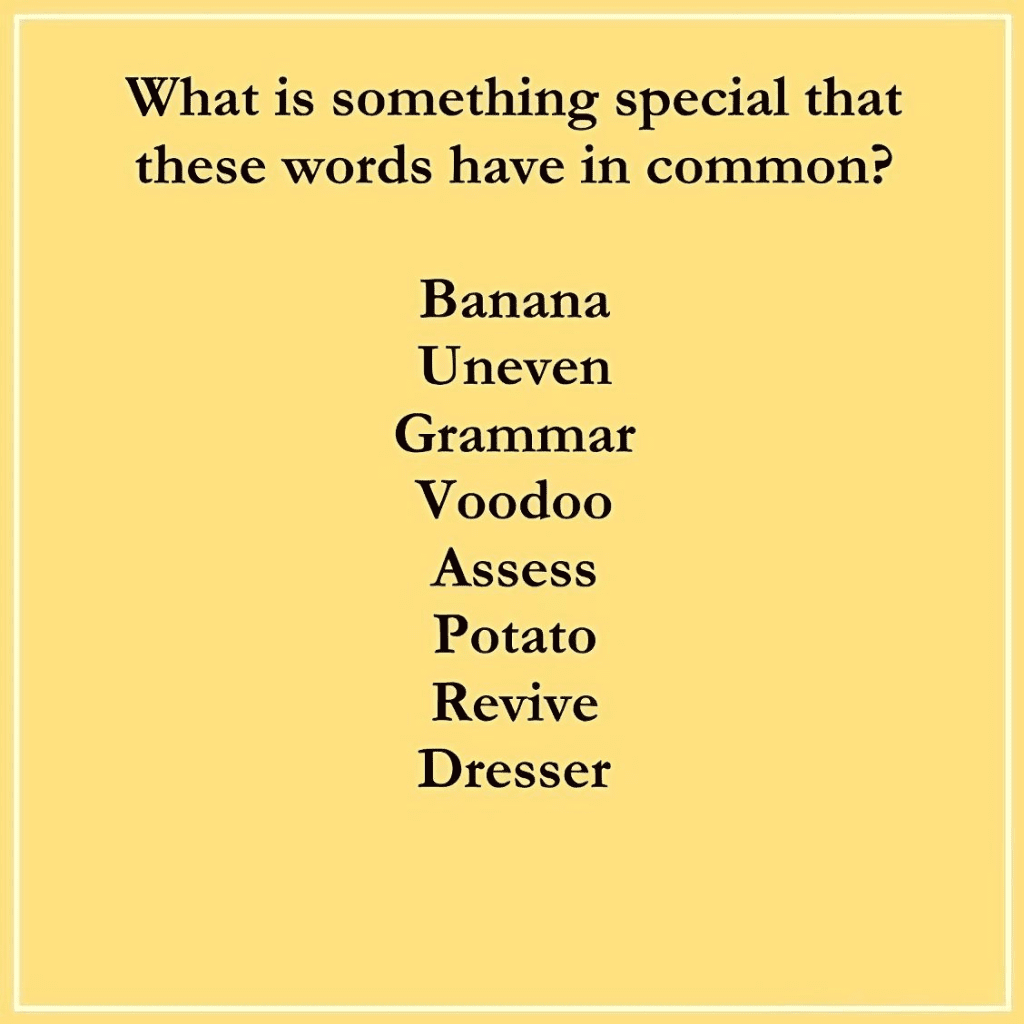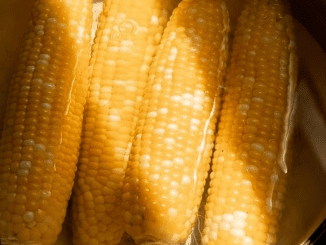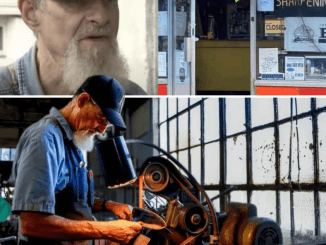Words are more than just letters strung together. They can be filled with hidden meanings, clever arrangements, and surprising patterns that make us think. In today’s challenge, we have a set of seemingly unrelated words that share a unique commonality. Are you ready to dive into this brain teaser and figure out what makes these words special?
Why This Puzzle Can Be Tricky
At first glance, this puzzle might appear to be a simple vocabulary exercise. But there’s more to it. The trick is not about the meanings of the words or the syllables—they all share a unique structural pattern. Solvers often get distracted by trying to group the words based on definitions, origins, or length, which can lead them astray. The real challenge is noticing the small details of the words.

The puzzle is about how the letters are arranged, not about the context or definitions of the words themselves. Solvers might feel tempted to overthink it or focus on more complicated relationships when the answer is actually quite simple.
Common Mistakes Solvers Make
Before we dive into the solution, let’s address some common mistakes that often mislead people:
- Focusing on Word Meanings: Many solvers initially try to find a thematic connection among the words, which is understandable, but the puzzle isn’t about definitions or semantics.
- Looking for Phonetic Patterns: Some people attempt to find connections in pronunciation, such as rhymes or similar sounds, but that’s not the key here.
- Overthinking the Solution: It’s easy to explore complex word theories or linguistic rules. However, this puzzle is based on a much simpler observation.
- Ignoring Letter Positions: The solution lies in the positions of specific letters within each word, but solvers often overlook this detail.
Now that we’ve highlighted these common pitfalls, let’s break down the solution step by step.
Step-by-Step Guide to Solving the Puzzle
The words presented in this puzzle might seem random, but they share a hidden feature. Let’s explore them in detail.
Step 1: Analyzing the Words Individually
Here’s a list of the words we’re analyzing:
- Banana
- Uneven
- Grammar
- Voodoo
- Assess
- Potato
- Revive
- Dresser
To uncover the hidden pattern, let’s examine each word closely, focusing specifically on the second letter and the last letter.
- Banana: The second letter is ‘a’, and the last letter is also ‘a’.
- Uneven: The second letter is ‘n’, and the last letter is also ‘n’.
- Grammar: The second letter is ‘r’, and the last letter is also ‘r’.
- Voodoo: The second letter is ‘o’, and the last letter is also ‘o’.
- Assess: The second letter is ‘s’, and the last letter is also ‘s’.
- Potato: The second letter is ‘o’, and the last letter is also ‘o’.
- Revive: The second letter is ‘e’, and the last letter is also ‘e’.
- Dresser: The second letter is ‘r’, and the last letter is also ‘r’.
Step 2: Identifying the Common Feature
If you carefully observe the words, you’ll notice a consistent pattern: the last letter of each word matches the second letter. This is the unique feature that all these words share. It’s purely structural, making it a clever and subtle wordplay that many might miss at first glance.
Why This Puzzle Is a Great Brain Teaser
This puzzle is an excellent example of how even the simplest words can contain intriguing patterns. It’s not just a test of vocabulary, but rather an exercise in observation and lateral thinking. It encourages you to pay attention to details you might usually overlook.
The puzzle emphasizes the importance of looking beyond obvious meanings and considering the structure of words. It’s a reminder that sometimes the solution lies in the smallest of details, not in complex analyses.
By solving this puzzle, you improve your pattern recognition skills—a valuable asset in problem-solving. It’s also a fun way to sharpen your logical thinking, encouraging you to approach problems from different angles.
Challenge Your Friends and Share Your Thoughts
Did you figure out the puzzle on your own? If so, congratulations! If not, don’t worry—this puzzle is designed to challenge even the most observant minds. Why not share it with your friends and see if they can spot the pattern? It’s always interesting to see how others approach the same challenge, and discussing strategies can help improve your skills.
Conclusion
This word puzzle is a fantastic exercise in finding hidden patterns and enhancing logical thinking. It demonstrates that even everyday words can hold unexpected surprises, urging us to look closer and think differently. So, the next time you’re faced with a puzzle, remember to pay attention to the smallest details—they might just hold the key to the solution.
Puzzles like this one are not only entertaining but also great for sharpening your critical thinking skills. Keep challenging yourself with more brain teasers, and you’ll soon find yourself spotting patterns and solving problems faster than ever.


